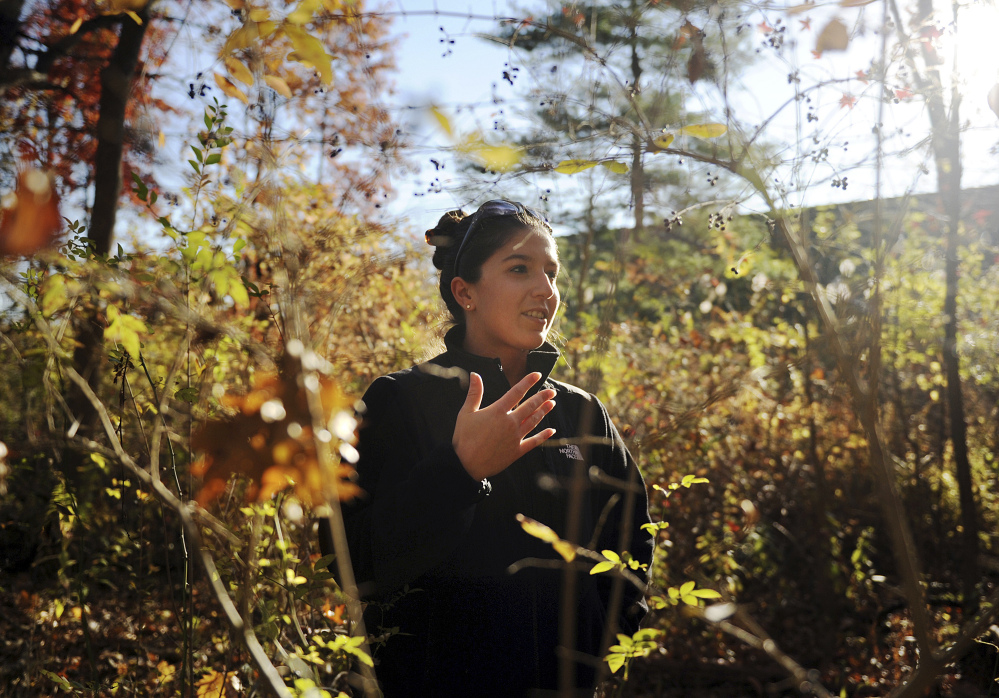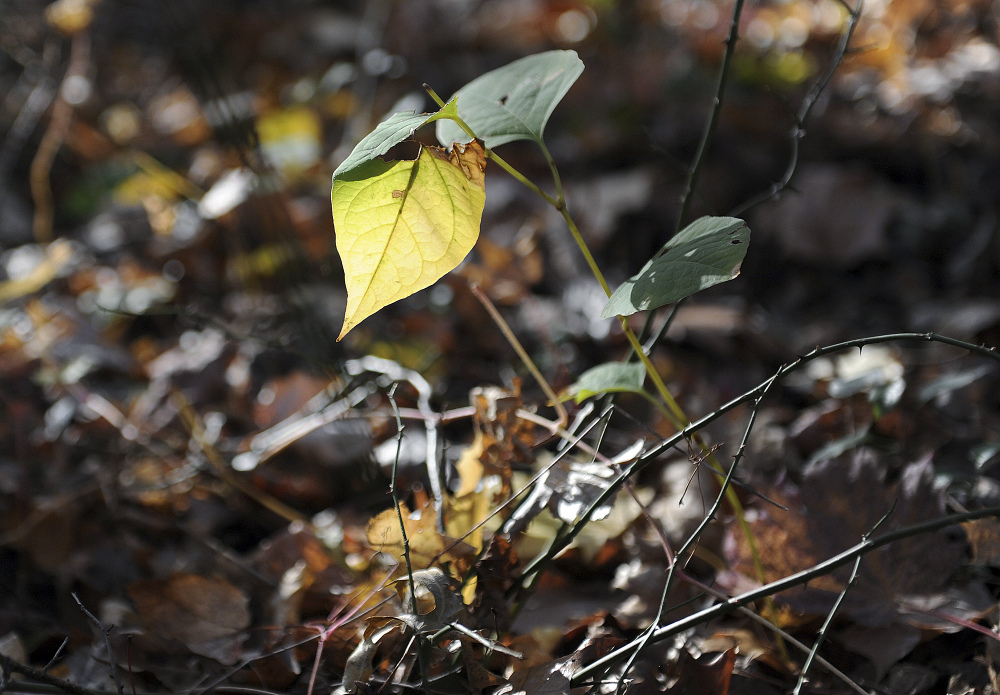GREENWICH, Conn. — From the heart of the thicket, you can’t see the road, just trees growing bare and tangles of weeds, still green against the reds and yellows of the ground cover.
North Street School is just a stone’s throw away, and the fire training tower peeks through the gaps in trees at certain angles. But on the ground, the 8 acres of town-owned, midcountry wetland is pure forest.
At least once a week, into this wild growth tromps Lindsay Tomaszewski, a graduate student in environmental science and management at Sacred Heart University and intern with the town’s Inland Wetlands and Watercourses Agency.
Her mission is to help the town rid the area of things that do not belong here – the heart-shaped leaves of Japanese knotwood that clutter close to the ground; gnarled, spiny multiflora rose bushes that billow over smaller shrubs; Chinese wisteria vines as thick as an arm that strangle red maples, leaving burn marks when their grip loosens.
“Every other Saturday, I’ll come out here with a machete,” said Tomaszewski. “We can’t excavate because of budget goals. And because of the school, we can’t use any herbicides.”
There are 14 recorded invasive species on the North Street site, gradually taking over the roughly 32 native species that have been documented. Because invasives have no natural predators they grow unhindered.
“These invasives create a monoculture,” said town Wetlands Compliance Officer Doreen Carroll-Andrews. “If unchecked, there will be nothing else there, there will be no diversity.”
Tomaszewski is the IWWA’s second intern in the agency’s invasives remediation project – and the first to get her hands dirty in the field. While her predecessor, Matthew Baldwin, was responsible for early mapping to determine the extent of invasive growth, Tomaszewski is now researching and practicing ways to remove the destructive flora. It’s a crash course in the hard realities of environmental management.
Edges between wild and developed land are frequent introduction points for exotic species, which grow from there.
The IWWA estimates invasive species comprise roughly 61 percent of the property’s plant cover. Along portions of the plot’s developed borders with North Street and the fire training facility, invasive abundance increases to between 75 and 100 percent.
For now, cutting and hand-pulling the invasives seem to be the town’s prime options for getting rid of them. While effective in the long run, the process is laborious and time-consuming. Knotwood must be cut five times a year for five years in order to be eradicated.
The IWWA is also planting red maples along the edges of the property where the alien plants are at their most abundant. The hope is that once the trees grow to full height, they’ll block sunlight and help reduce low-lying invasive growth in the most affected areas.
“It takes years, but over the course of those years, this project is going to be a good stepping stone,” Carroll-Andrews said. “For now we just want people to get their hands dirty and get in the dirt.”
An influx of invasives usually spells doom for ecosystems as their unchecked growth depletes soil of valuable nutrients, but Tomaszewski’s research points toward hope for the site.
But the North Street property is just a single tiny sliver of the town’s forested land — and much of it shares a similar problem with invasives. The same is true across New England.
Copy the Story LinkSend questions/comments to the editors.




Success. Please wait for the page to reload. If the page does not reload within 5 seconds, please refresh the page.
Enter your email and password to access comments.
Hi, to comment on stories you must . This profile is in addition to your subscription and website login.
Already have a commenting profile? .
Invalid username/password.
Please check your email to confirm and complete your registration.
Only subscribers are eligible to post comments. Please subscribe or login first for digital access. Here’s why.
Use the form below to reset your password. When you've submitted your account email, we will send an email with a reset code.